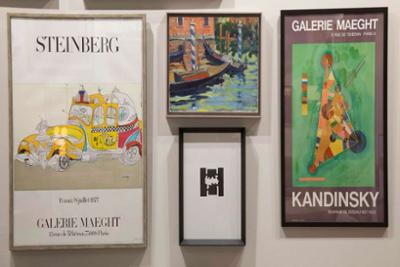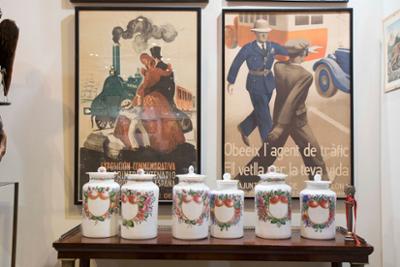

The advertising poster throughout its history

Advertising before the advent of the Internet
Since ancient times it has been customary to place public advertisements in the busiest areas of cities. At the end of the 18th century, the development of the advertising poster as we know it began to develop and flourish.
Since ancient times it has been customary to place public advertisements in the busiest areas of cities. However, advertising, and specifically the advertising poster, is a means of communication that fully developed at the end of the 18th century and throughout the 19th century, when the new economic and social context produced a major transformation in society.
We must take into account the impact of the Industrial Revolution with large masses of people moving from the countryside to the city, the rise of new and increasingly empowered social classes such as the bourgeoisie and, above all, a greater development of the media; newspapers, women's magazines, leaflets, posters and pamphlets flooded the streets and spread the liberal and modern ideas of the 19th and 20th centuries.
It was this development in the media that made entrepreneurs want to advertise their products to reach a much wider target audience, and the poster was the most suitable medium for this purpose. The advertising poster is a large sheet of paper, or several sheets of paper glued together, which is printed in various colours through the use of techniques such as lithography and later chromolithography, which made it possible to print in various colours.
The birth of the advertising poster
The creator of the advertising poster is Jules Cheret, who, after founding his chromolithography establishment, developed the guidelines for the poster with highly colourful and dynamic advertisements, where the letters and characters merge into one, being used to represent the performing arts. However, if there was one thing that distinguished the advertising poster of the late 19th century, it was the use of women as a brand image. Cheret, but above all better-known figures such as Henri Toulouse-Lautrec and Alphonse Mucha, produced advertising posters that revolved around very different visions of women.
In the case of Toulouse-Lautrec, although he only produced thirty-one posters, some of them have gone down in posterity, such as the one for the Moulin Rouge known as La Goulue.
The poster in Spain
In Spain, freedom of expression was recognised in 1883 with the promulgation of the Press Law during the government of Sagasta, which allowed the press and advertising to begin an unstoppable growth, with the first newspaper advertising posters issued by new agencies such as the Catalan agency Roldós and the Madrid agency Los Tiroleses.
Spanish advertising posters were closely linked to Catalan Modernisme, with well-known figures such as Ramón Casas, who, following the guidelines of French poster design, developed the traditional image of the Spanish woman, the manola dressed in a shawl.
This image would be perpetuated above all in the representation of the bullfighting poster, where the manola, the bullfighter and the bullring became iconographies representative of the Spanish people. Alongside these posters, another type was also taking off: tourist posters, as Spain was beginning to become a country with a significant influx of tourists, and artists such as Rafael Penagos focused part of their production on creating an idyllic image of early 20th-century Spain.
The war poster
The world conflicts and the civil war gave a new edge to the poster, which was now placed at the service of war and acquired a propagandistic aspect on both sides. The aim was to move consciences, raise money, manpower and soldiers, but above all to justify the actions of war, so it was logical to develop aggressive and moral messages with the characteristic message of I want you for U.S. Army by Montgomery Flagg or the numerous Republican posters by Josep Renau.
After the Second World War, the poster began a period of decline, mainly due to the appearance of media such as radio, cinema and, above all, television. Thus, although the poster transformed its foundations for the new mass and consumer society, the truth is that today it is considered a work of art and a collector's item whose sale is constantly increasing due to its economic versatility.
Paula de la Fuente Polo





